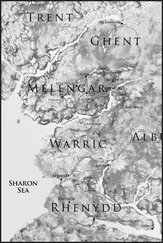Michael Neufeld - The Rocket and the Reich
Здесь есть возможность читать онлайн «Michael Neufeld - The Rocket and the Reich» весь текст электронной книги совершенно бесплатно (целиком полную версию без сокращений). В некоторых случаях можно слушать аудио, скачать через торрент в формате fb2 и присутствует краткое содержание. Город: Washington, Год выпуска: 2013, ISBN: 2013, Издательство: Smithsonian Books, Жанр: История, military_weapon, на английском языке. Описание произведения, (предисловие) а так же отзывы посетителей доступны на портале библиотеки ЛибКат.
- Название:The Rocket and the Reich
- Автор:
- Издательство:Smithsonian Books
- Жанр:
- Год:2013
- Город:Washington
- ISBN:978-1-58834-466-3
- Рейтинг книги:3 / 5. Голосов: 1
-
Избранное:Добавить в избранное
- Отзывы:
-
Ваша оценка:
- 60
- 1
- 2
- 3
- 4
- 5
The Rocket and the Reich: краткое содержание, описание и аннотация
Предлагаем к чтению аннотацию, описание, краткое содержание или предисловие (зависит от того, что написал сам автор книги «The Rocket and the Reich»). Если вы не нашли необходимую информацию о книге — напишите в комментариях, мы постараемся отыскать её.
The Rocket and the Reich — читать онлайн бесплатно полную книгу (весь текст) целиком
Ниже представлен текст книги, разбитый по страницам. Система сохранения места последней прочитанной страницы, позволяет с удобством читать онлайн бесплатно книгу «The Rocket and the Reich», без необходимости каждый раз заново искать на чём Вы остановились. Поставьте закладку, и сможете в любой момент перейти на страницу, на которой закончили чтение.
Интервал:
Закладка:
Through 1938 and the first half of 1939, interservice relations between individuals in the rocket plane program continued to be cordial. A new project was even added. In August 1938 the Air Ministry asked the Army to design an alcohol/liquid-oxygen takeoff-assist system for heavily loaded aircraft. Two teardrop-shaped pods of 1,000-kg thrust each would be strapped under the wings of an airplane and then jettisoned and parachuted to the ground after use. 42
But the Luftwaffe strove, from 1936 on, to acquire independence from the Army in the rocket field, and the alliance declined after 1937. From late 1935 on, the Air Ministry became more and more deeply involved in Hellmuth Walter’s hydrogen peroxide rocket development in the port city of Kiel. In March 1936 Walter, who had recently set up an engineering company with the assistance of the Navy, notified Ordnance that he no longer needed consultation in rocketry because he had received Air Ministry contracts for takeoff-assist rockets and engines for “aerial torpedoes” and aircraft. Parallel to the cooperative program with the Army, the air force had Heinkel build He 112 and He 176 versions with the less efficient but more practical hydrogen peroxide rocket. Other aircraft were experimentally fitted with Walter motors as early as January 1937. 43
For military use in the field, peroxide had a number of advantages over liquid oxygen, which had a tendency to freeze valves and boil away. Hydrogen peroxide (H 2O 2) in high concentrations (80 percent or more) was not easy to deal with either, because of its tendency to explode, but Walter was able to develop a system for handling it. He could also offer two different versions of his rocket, “hot” and “cold.” In the “cold” version, the inherently unstable peroxide was run over a catalyst and decomposed into superheated steam and oxygen; in the “hot” version catalyzed peroxide was burned with a hydrocarbon fuel, producing more thrust. Because of their adaptability, Walter’s rockets had useful applications in a number of Luftwaffe projects, despite their relatively poor efficiency compared with Ordnance’s engines. As time went on, the air service committed itself more and more to this technology. Around the turn of 1938–39, it initiated the Me 163 rocket aircraft project at Messerschmitt by combining Walter motors with the radical tailless, delta-wing glider designs of Alexander Lippisch. The main line of takeoff-assist systems came to be designed by the Kiel company as well. Apparently the Air Ministry had asked Ordnance to design a liquid-oxygen/alcohol version in 1938 only because of fears that hydrogen peroxide would be in short supply. 44
If the Luftwaffe’s cooperation with Walter suggests a gradual evolution away from dependence on the Army rocket program, the strange story of Eugen Sänger indicates that at least some people in the Technical Office wanted to lay the groundwork for independence even at the height of the alliance. Sänger (1905–64) was an Austrian spaceflight enthusiast and engineer who had pursued rocket research at the Technical University in Vienna beginning around 1929. He put in a proposal to the Germans in 1934 after its rejection by the Austrian military. Although the Ordnance rocket group was aware of his useful publications, it was not keenly interested, but it did ask for an investigation of his political views by the SA, which no longer posed a threat to the Army after the bloody purge of mid-1934. (Ordnance was unaware that Sänger had briefly been a member of the Austrian Nazi Party and SS in 1933.) Because the SA never responded, and because Sänger was not a German citizen and his work apparently was no more advanced than von Braun’s, Ordnance did not take up his proposal. Zanssen suggested that the Air Ministry might be more interested, because the Austrian had made theoretical investigations into rocket aircraft. But in October 1935, after the founding of the alliance with the Luftwaffe, von Braun recommended that the Air Ministry not hire Sänger since his efforts would be duplicative. A 1937 document suggests that the aristocratic young engineer may well have perceived the Austrian as a rival. 45
In February 1936 the Research Division of the Technical Office hired Sänger anyway for a projected massive aeronautical research establishment near Braunschweig in north-central Germany. Shortly thereafter, the Air Ministry gave him the funds to create a rocket research institute at Trauen, some distance from the main establishment. That institute received a cover name, the Aircraft Test Center, with the apparent intent of obscuring its existence as much from the Army as from foreign intelligence services. The Air Ministry allegedly even asked Sänger to change his name. He refused but signed documents with only the initial “S.” His group began to test a 1,000-kg-thrust liquid oxygen/diesel oil rocket motor in 1939 and drew up a design for a 100-ton-thrust engine, but in 1942 the Air Ministry ended its duplicitous attempt to set up a large rocket-engine program parallel to the Army. There was skepticism about its value to the Luftwaffe. Besides, intense disagreements had arisen between Sänger and the director of the Braunschweig establishment. In any case, the Austrian engineer had never received funds adequate to challenge Peenemünde-East in the high-stakes rocket business. 46
The decision to hire Sänger and pursue an independent course may have come about because of the decline of von Richthofen’s influence. He left the Development Division in early 1937, six months after Göring had appointed Ernst Udet, a renowned World War I fighter ace, to head the Technical Office. In the long run Udet was a disastrous choice, being such a poor administrator, but had the virtue of subservience to Göring’s wishes. The expenditure on Sänger’s facility at Trauen could not have been made without the approval of Göring or Udet, and it would have been consistent with their desire to assert independence from the Army.
A final indication of the decline of the Luftwaffe–Army alliance is the breakup of the joint facility at Peenemünde less than a year after it was opened. The cause primarily lay elsewhere than in Luftwaffe policy. A certain Brigadier General Schneider (no relation to the former rocket group member Erich Schneider) was appointed as Commandant of the Peenemünde Experimental Center. As an old-fashioned officer of the combat engineers (Pioneers), he proved to be a poor choice. He was very bureaucratic and even threatened Rudolph with legal action for ordering large quantities of materials in advance. Rudolph’s policy ensured fast progress in development work at the cost of some wastage, but it ran against the tradition of ordering what was needed according to the lowest bid and waiting months for it to show up. Schneider had another run-in with Peenemünde-East over who was to control the receipt of shipments, and he wanted to meddle in technical correspondence between von Braun and Dornberger’s office in Berlin. 47
The Peenemünde organization simply did not work. The two facilities were under the authority of the Commandant for some functions and under their respective service administrations for others. The demise of that unwieldy arrangement was hastened by Schneider’s obstructiveness. By the fall of 1937 he was on bad terms with Dornberger and everyone else. According to an October 28 memorandum from Dornberger to Schneider: “The constant small conflicts with the Construction Office and the RLM [Reich Air Ministry] have led to RLM’s desire to separate itself from the Commandant’s Office. The basis for maintaining a general as Commandant has therefore been eliminated.” The Air Ministry officially separated Peenemünde-West from the joint command on April 1, 1938, after notifying the Army that the 1937–38 payment of 1 million marks into the development and test budget of Peenemünde-East would not be continued. In the future the air force would return to paying the actual costs of any work done. As a result of the separation, what remained of the facility became the Peenemünde Army Experimental Center, and Schneider was retired. In the summer of 1938 Leo Zanssen returned to the program as Commandant after serving more than two years as a battery commander and administrator in the solid rocket/chemical warfare units (the Nebeltruppen ). 48
Читать дальшеИнтервал:
Закладка:
Похожие книги на «The Rocket and the Reich»
Представляем Вашему вниманию похожие книги на «The Rocket and the Reich» списком для выбора. Мы отобрали схожую по названию и смыслу литературу в надежде предоставить читателям больше вариантов отыскать новые, интересные, ещё непрочитанные произведения.
Обсуждение, отзывы о книге «The Rocket and the Reich» и просто собственные мнения читателей. Оставьте ваши комментарии, напишите, что Вы думаете о произведении, его смысле или главных героях. Укажите что конкретно понравилось, а что нет, и почему Вы так считаете.












